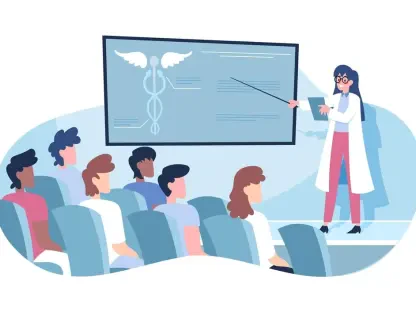Imagine a decision so vast it affects the health and security of 750,000 people—active workers and retirees who have dedicated their lives to serving New York City, and now face uncertainty due to a controversial healthcare overhaul. This is the reality confronting the Municipal Labor Committee (MLC), an umbrella organization representing over 100 city unions, as it navigates this significant change for public sector employees and pre-Medicare retirees. The significance of this shift, approved amidst fierce debate, lies not just in its scale but in the profound questions it raises about trust, transparency, and the future of labor relations in one of the nation’s largest cities. What drives such a monumental change, and why has it sparked such intense opposition? The story of the MLC and its recent decision offers a window into the complex interplay of fiscal responsibility and employee welfare.
Roots of a Storied Organization
The Municipal Labor Committee stands as a cornerstone of New York City’s labor landscape, formed to unite diverse unions under a single banner to negotiate benefits and working conditions for public sector workers. Representing everyone from teachers to sanitation workers, the MLC has historically been a powerful advocate, ensuring that city employees receive robust healthcare coverage as a key pillar of their compensation. For decades, plans like the GHI Comprehensive Benefits Plan have symbolized a hard-earned promise of security, reflecting the committee’s commitment to its members’ well-being.
This legacy, however, is not without its challenges. Past negotiations have often been contentious, with the city pushing for cost reductions while unions fight to preserve benefits. A notable clash occurred a few years back when a proposed shift to a Medicare Advantage plan for retirees was met with legal battles and public outcry, ultimately failing due to widespread distrust. This history of friction sets the stage for understanding the MLC’s current predicament as it grapples with balancing member needs against mounting financial pressures.
A Bold Move Amidst Controversy
The MLC’s latest decision marks a seismic shift in healthcare policy, approving a transition from the long-standing GHI plan to a self-funded insurance model administered by EmblemHealth and UnitedHealthcare. Scheduled to roll out in just over a year, this overhaul promises significant changes for 750,000 individuals, including active employees and retirees not yet on Medicare. City officials champion the plan as a forward-thinking solution, projecting annual savings of $1 billion while maintaining premium-free coverage without hiking out-of-pocket costs.
Beyond fiscal benefits, the administration highlights expanded access as a major win. The new model is set to include over 10,000 additional providers in downstate New York, 20,000 more mental health professionals statewide, and a national network of 1.6 million providers for retirees living outside the region. Such enhancements aim to address longstanding gaps in care, particularly in mental health services, which have often been under-resourced for city workers.
Yet, the decision-making process has drawn sharp criticism for its lack of openness. Union members and retirees report being sidelined, with access to contract details heavily restricted and documents often redacted during reviews. This perceived secrecy has fueled accusations that the MLC and city leadership have sidelined rank-and-file input, undermining the very principles of collective bargaining that the committee was founded to uphold.
Distinctive Risks of a New Model
What sets this healthcare shift apart is the adoption of a self-funded insurance framework, a departure from traditional fully insured plans. In this model, the city assumes greater financial risk by directly funding claims rather than relying on an insurer’s pool, which introduces a layer of uncertainty. While this approach can yield savings if managed well, critics warn of potential pitfalls, such as budget shortfalls during unexpected spikes in healthcare costs.
Additional concerns loom over how care will be administered under this system. There’s apprehension that utilization management practices—designed to control costs—could result in denied treatments, leaving workers and retirees vulnerable. Privacy issues also surface, with fears that sensitive health data might be mishandled or shared to prioritize savings over individual needs, especially given reduced state oversight in a self-funded setup.
The accelerated timeline for implementation adds another dimension of difficulty. With just over a year until the plan takes effect, many affected individuals feel unprepared and uninformed, heightening anxiety about whether the MLC and the city can address logistical hurdles in time. This rush raises questions about the feasibility of a smooth transition for such a large and diverse population.
Where Things Stand Today
As of now, the healthcare overhaul is on track for implementation, with a public comment period slated to begin soon, accompanied by the release of a redacted version of the contract. This step, while a nod toward public input, has done little to quell dissatisfaction among union members and activists who argue that the limited transparency continues to exclude meaningful participation. Protests and public statements reflect a deep frustration with how the MLC has handled the process.
Criticism extends beyond procedural flaws to the very essence of trust between the committee and its constituents. Retirees, in particular, express a sense of betrayal, feeling that promises of secure benefits after years of service are being eroded. Active workers, meanwhile, worry about future stability, with many questioning whether the MLC still represents their best interests in negotiations with the city.
The current atmosphere is one of tension, as stakeholders await further details and opportunities to voice concerns. The upcoming comment period represents a critical juncture, though skepticism remains about whether feedback will genuinely influence the final outcome. For now, the MLC finds itself at the center of a storm, navigating a path between administrative goals and member discontent.
Reflecting on Impact and Legacy
Looking at the broader picture, the MLC’s decision on this healthcare overhaul reverberates through New York City’s public sector workforce, potentially reshaping labor relations for years to come. On one hand, the plan’s emphasis on cost savings and expanded provider networks could set a precedent for innovative benefit structures, demonstrating how large-scale systems might adapt to fiscal constraints without sacrificing quality.
On the other hand, the erosion of trust poses a significant challenge to the committee’s credibility. The perception that decisions are made behind closed doors threatens to weaken solidarity among unions and could complicate future negotiations on other critical issues. If unresolved, this rift might lead to lasting divisions, with members seeking alternative avenues to protect their rights and benefits.
Legally, the overhaul faces potential hurdles as well, with critics already discussing challenges to safeguard existing protections. The outcome of such actions could further define the MLC’s role in advocating for workers, testing whether it can reclaim confidence amidst accusations of opacity. The stakes extend beyond healthcare, touching on the fundamental relationship between city leadership and its workforce.
Final Thoughts on a Pivotal Moment
Looking back, the Municipal Labor Committee’s journey through this healthcare reform revealed both its capacity for bold action and the fragility of trust within its ranks. The approval of a self-funded insurance model stood as a testament to the organization’s willingness to tackle fiscal challenges head-on, yet the backlash from members underscored deep flaws in communication and inclusion. The struggle to balance savings with security painted a vivid picture of the complexities facing public sector unions in an era of tight budgets.
Moving forward, the path demands greater transparency and genuine dialogue to mend fractured relationships. Engaging members through clear, accessible information during the public comment period offers a chance to rebuild faith. Beyond that, the MLC needs to prioritize mechanisms for accountability, ensuring that future decisions reflect the voices of those most affected. This moment in the committee’s history serves as a reminder that true advocacy requires not just negotiation, but an unwavering commitment to the people it represents.









